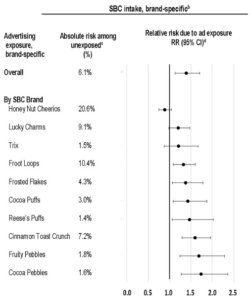Food industry: efforts to fight hunger?
I keep saying that food companies are not social service or public health agencies and should not be viewed as such. They are businesses, and everything they do must aim to promote sales and returns to investors.
BakeryandSnacks.com, an industry newsletter to which I subscribe, has collected several of its articles on the anti-hunger activities of its member companies. Is this public health or public relations? Read and decide.
- Editor’s Spotlight: The food companies committed to fighting world hunger: World hunger remains a persistent crisis, with approximately 842 million people going hungry every day. We look at the bakery and snack giants that are leading the fight against hunger and malnutrition. Read more
- Cereals on-demand: UN to pilot ‘game-changing’ Food ATMs for African refugees: The United Nation’s World Food Program (WFP) and World Vision International (WVI) are planning to pilot automated teller machines (ATMs) in refugee camps in East Africa, which dispense locally sourced foods like cereals; much like a banking ATM dispenses cash. Read more
- Consumer watchdogs call out Kellogg’s for allegedly slashing fortification in Mexican children’s breakfast cereals: Three consumer watchdogs contend that Kellogg’s has allegedly removed essential micronutrients in its breakfast cereals sold in Mexico, despite 1.6 million children in the country suffering from chronic malnutrition. Read more
- Researchers develop disease-resistant climate-smart grains to help eradicate poverty in Africa: The International Crops Research Institute for the Semi-Arid Tropics (ICRISAT) says it foresees rolling roll out new varieties of drought- and disease-resistant grains to African farmers next year to increase food security in the region. Read more
- Calling for entries: General Mills launches second Feeding Better Futures Scholars Program: General Mills is again calling on young innovators across North America for solutions on hunger relief, food waste and sustainable agriculture. Read more
- Call to action: FAO places nutrient-rich millets center stage to boost global innovation: The UN’s Food and Agriculture Organization (FAO) has approved India’s proposal to observe 2023 as the International Year of Millets. Read more
- Kellogg’s partners with global food banks to get the most needed foods to people in need: Kellogg is collaborating with Feeding America and The Global FoodBanking Network to make it easier for people to fight hunger by donating the foods hungry families request most from food banks across the globe. Read more
- Cereal giants Kellogg, Post and General Mills partner with Walmart to #fighthunger: Kellogg Company, Post, PepsiCo, Unilever, General Mills and ConAgra Foods are some of the suppliers to have joined with Walmart in its ‘Fight Hunger. Spark Change’ program in the US and Puerto Rico. Read more






